Way Down South
The past few months have been fairly hectic and it’s been a while since we took a trip so my wife and I decided to spend a few days at the bottom of the South Island. We hadn’t been down that way since 2003 and were hoping to find it as uncrowded and unspoiled as we remembered. And it was! Not only did we see some interesting things, we also met a lot of very interesting people.
We were at the very bottom of the South Island and the only thing further south is Antarctica.
Here is our route:
We flew into Dunedin, about 2 hours from Auckland, and picked up a rental car. Our first stop was the Orokonui Ecosanctuary just outside of Dunedin. It was a little cloudy but the views were great on the drive up.
Orokonui is dedicated to saving seriously endangered native wildlife. Before humans came to New Zealand, there were no mammals except for a small bat. As a result, birds didn’t have to worry about predators and over time they lost the ability to fly. Many NZ native birds are flightless and even if they can fly, they often spend a lot of their time on the ground and build their nests on the ground.
When humans arrived with rats, cats, dogs, weasels and stoats, a lot of native birds’ days were numbered and today many of them are either extinct or seriously endangered. In addition to predators, other introduced pests such as rabbits and possums destroy the habitat of many birds by eating vegetation.
The Department of Conservation has established several island bird sanctuaries, however over the past decade thanks to the initiative of several community groups around the country, a few mainland bird sanctuaries have been established too.
The Orokonui Sanctuary is 307 hecatares (about 750 acres) in size and in order to protect native wildlife in the sanctuary, a nine kilometre (about five and a half mile) predator proof fence has been built completely around the park. You start off in the very interesting visitor’s centre.
Once you register, you are given an access code for the gate to the fence. It’s a little bit like entering a maximum security prison. The fence is 2 metres high and mesh covered to prevent even baby mice from sneaking in. It has a metal skirt at the bottom to prevent animals from burrowing underneath and vegetation is cleared in a 4 metre wide path along the fence so that animals can’t climb neighbouring trees and jump over. There is also a sensor wire to set off an alarm if any animal tries to climb over the top. As I say, maximum security.
There are huge debates as to whether fences like this are economically justifiable. But it seems worthwhile when you get inside and see some of the birds that are wandering around. This is a takahe—a large adult can weigh ten pounds.
After spending a leisurely few hours at Orokonui we headed to Cromwell in Central Otago to visit our friends Heather and Paul. They used to live in Auckland but moved last year. As you drive north you leave the temperate rain forest and move into prairies and desert.
Cromwell has a population of about 4,000 and has the distinction of being the town in New Zealand that is farthest from the ocean—119 kilometres (about 70 miles). It is a lovely and interesting place.

It was a boom town in the 1800s when gold was mined extensively in the area. And when you walk around you can see some of the old settlements. There are also warning signs to watch out for abandoned mine shafts.
Of course, this being New Zealand, the only thing that hadn’t abandoned the area were sheep!
The Clutha River flows through Cromwell and in the 1990s a dam was built just south of the town to providehydroelectric power.
As a result, a good part of the old town is now underneath Lake Dunstan, which was formed by the dam. Over the past few years the old town has been reconstructed along the lake.
Before leaving Cromwell we visited New Zealand’s only bug reserve. The Chafer beetle lives only in New Zealand and is considered critically endangered. Like native birds, the beetles don’t fly and therefore are sitting ducks for introduced predators. In 1983 a 200 acre field was set aside to protect the beetles and at the time was the only reserve in the world created for an invertebrate.
To be honest, you don’t see a lot when you visit the reserve because the beetles live underground. And you can imagine that there are a lot of property developers wondering why some really prime real estate has been fenced off just for some bugs you can’t even see. I figure we can afford to give up 200 acres for bugs rather than a BMX track.
When people think of New Zealand, they usually think of two islands—North and South. However there is a third island and years ago, it was called the South Island and what is now the South Island was called the Middle Island. Today the original South Island is called Stewart Island or Rakiura. Stewart Island is much smaller than the other islands and has only about 400 inhabitants, most of whom are involved with either fishing or tourism.
Because of its isolation, there has never been significant human settlement or development on the island and many native New Zealand plants and animals which are threatened are able to survive. Tourism on the island focuses on nature walks and hikes and there are a number of walking tracks both on Stewart Island and its surrounding smaller islands.
You can reach the island by either a boat or plane from Invercargill which is the southernmost city in NZ. We had heard that the boat ride could be hair-raising because of rough seas and in fact was often cancelled. So we decided to take the plane. It did occur to me that flying through conditions that could prevent ships from getting through might make the flight a bit of an adventure.
And that concern was heightened when I saw the plane.
This is how it looked from the inside:
And here is a picture from the last row where we were sitting. There were an odd number of passengers so the extra person got to sit in the co-pilot’s seat. The pilot is telling him to keep his hands to himself and not touch anything. And I think the guy behind him is covering his eyes!
Actually the flight was very smooth and the only thing breathtaking was the scenery.
There was no airport, just an airstrip and a van from the town was waiting for us. Incidentally, the van is also the control tower. The pilot and van driver communicated on the radio about landing conditions.
The van dropped us at the depot in Oban, the only town on Stewart Island and home to over 80% of the people who live on the island.We were met by Andy, who with Jo, his wife runs Jo and Andy’s B&B which is where we would be staying. Andy, Jo and the B&B were all very interesting and we spent many hours in interesting conversations.
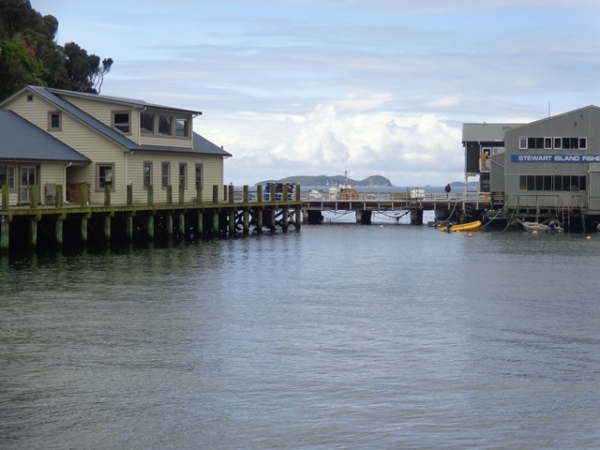
We spent a lot of time exploring Stewart Island, but the high point of our visit was a day trip to Ulva Island which is a ten minute boat ride from Oban.
The forest at Ulva Island was never logged for timber so unlike many other sanctuaries where the forest is only about 100– 200 years old, the trees here were several hundred years old. It was amazing and energizing walk.
The Department of Conservation has laid out a series of beautifully constructed and well maintained walking tracks and you can explore the island on your own or get a guide.
Ulva Island is pest free and home to a huge variety of native NZ birds and we saw a lot of them.
Because no one bothers the birds, other than tourists taking pictures, they are very friendly. The South Island robin, which doesn’t have a red breast, is very plentiful. In the hope that you will kick up some juicy bugs as you walk along, they follow you as you walk.
We also saw the NZ kaka, which is another indigenous and endangered parrot. They are big and noisy.
Another bird that is threatened outside of conservation parks is the saddleback. It is black with a brown patch on its back and red cheeks and has a lovely bird call.
And we were surprised when a kiwi ran across our path, but he was too quick to get a photo. Unlike the North Island kiwi, the South Island kiwi is not nocturnal. In the North Island there used to be a giant raptor (now extinct) that would feast on ground birds, so the kiwi up north evolved over time to be nocturnal. With no such predator in the South, the kiwi here are diurnal.
After three nice days on Stewart Island we took the early morning flight back to Invercargill. The plan for the rest of the trip was to do a leisurely drive along the southern coast back to Dunedin with a stop in Pounawea in the Catlins.
The Catlins Coast is the area of NZ between Invercargill and Balclutha. The population of the entire area is only about 1,200. The last time we were there, we were told to take in any food we wanted to the camp ground because there was only one grocery store and one restaurant—a fish and chips shop. After ten years, it hasn’t changed much although there are now more accommodation options, a bigger grocery store and five restaurants. But by and large it is a wonderfully wild and deserted area with lots of temperate rain forests and interesting birds and animals including seals and penguins.
Although the weather was fine while we were there, storms from the Southern Ocean can create havoc and there are two lighthouses along the way. The area has also been the site of many shipwrecks, including NZs worst maritime disaster.
Our first stop was Waipapa Point where in 1881 the SS Tararua sank in a storm with the loss of 131 lives. As a result, a lighthouse was built at the point in 1884. It is built of wood and still operates.
The area is surrounded by a rocky beach and there were sea lions wandering around as well.
The sea lions look like a lot of fun but there are signs everywhere to stay at least 20 feet away from them because they may not like you as much as you like them. There was also this scary sign:
Certainly one of the highlights of the trip was a visit to Niagara Falls (NZ).
Another sign a little further along warns you not to get your expectations too high.
And here’s the reality. Even I would go over these falls in a barrel!!
A short drive away are the Matai Falls which are a bit more impressive:
Late in the afternoon we arrived at Pounawea which is located where the Catlin River flows into the ocean. There is no town to speak of, just a few houses and the camp ground where we stayed. When we arrived the office was closed and this sign had been taped to the door:
We were staying in a cabin and because we’d stayed at the camp before, we chose cabin ‘B4’ and got settled in. Here I am having the obligatory cup of tea.
And checking out the beach at low tide.
In addition to being right on the ocean, the camp is also in the middle of a nature reserve filled with centuries-old trees.
We spent three days at the camp and explored the surrounding area. Somewhere along the way we had picked up a flyer for a place called “Earthlore Insect Theme Park.” It sounded interesting but debated whether we should go. It was Saturday and it was raining and we thought there might be a huge crowd of kids. We took our chances and when we arrived, we were the only people there!
We were met by Gordon, who along with his wife Jeannine owns and runs Earthlore. On this trip we met many interesting people, but Gordon was certainly one of the most interesting. We ended up spending over three hours at Earthlore and left with a lot of good information and gifts of fresh fruit from his organic orchard.
Gordon and Jeannine are amazing artists who display their work around the Catlins. They gave up careers in Dunedin and bought the property with the original idea of having a unique bed and breakfast in which the accommodation would be gypsy caravans individually built by Gordon. Here is his first effort:
Unfortunately, the local council wouldn’t let them operate as a business because the caravans weren’t wheelchair accessible.
Plan B was Earthlore which in an amazing place where people, but especially kids can learn about insects and their importance to just about everything on earth. The main attraction is something called “Bug City” in which the kids have to solve mysteries by learning bug facts under the guidance of “Inspector Insector.” I like the antennae on the hat.
While there we met another interesting person, William Bisset, who is making a television documentary on the interesting people and the history of Southland. He is travelling through the Catlins with nothing but his clothing and cameras and he knocks on peoples’ doors and asks them if he can stay with them. He works to earn his keep. He is currently staying at Earthlore and helping Gordon with various maintenance jobs. And he is staying in the gypsy caravan!
You can check out a two minute video about his project here or have a look at his web site here.
In addition to interesting people, there was no shortage of fantastic scenery. This is the lighthouse at Nugget Point.
It’s a long walk to the top but worth it. You don’t have to be a geologist to wonder about how those rocks got the way they are.
And we had the beach to ourselves at Surat Point, the site of another shipwreck.
And walked through a spooky abandoned railway tunnel:
After a visit to the ominously named Cannibal Bay, we headed toward Dunedin where we were going to spend the night at a place near the airport for our early morning flight. Some locals told us to avoid the main road and take the coast road. They claimed, and they were right, that the views would more than make up for the fact that the road isn’t paved.
For about 50 kilometres we didn’t see another car but nonstop amazing scenery.
We are hoping that the next time we come back the road will still be unpaved! On the drive home after landing in Auckland I realised I was encountering traffic lights for the first time in ten days. Sort of makes you ready to go back!







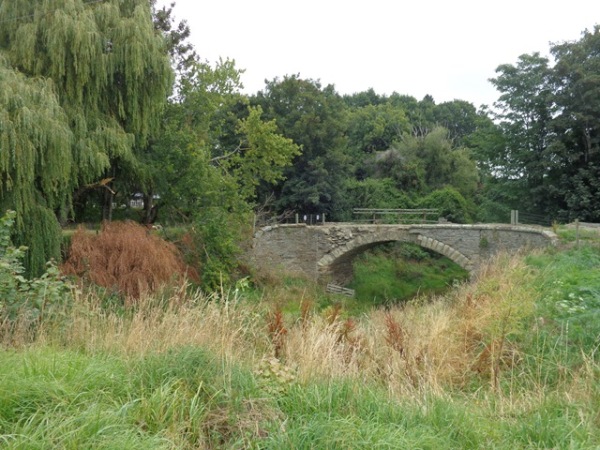


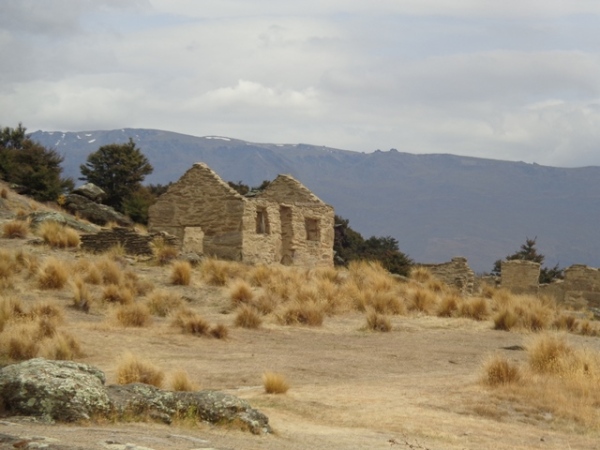



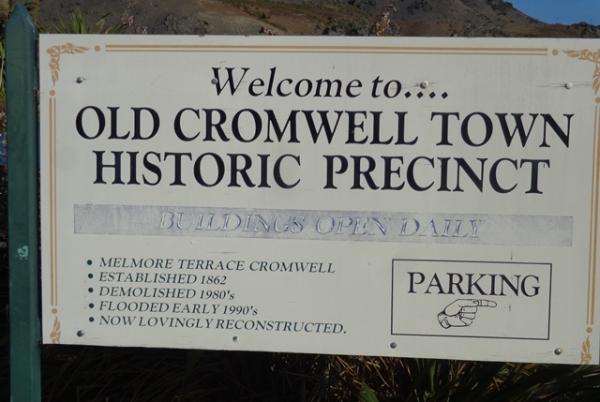





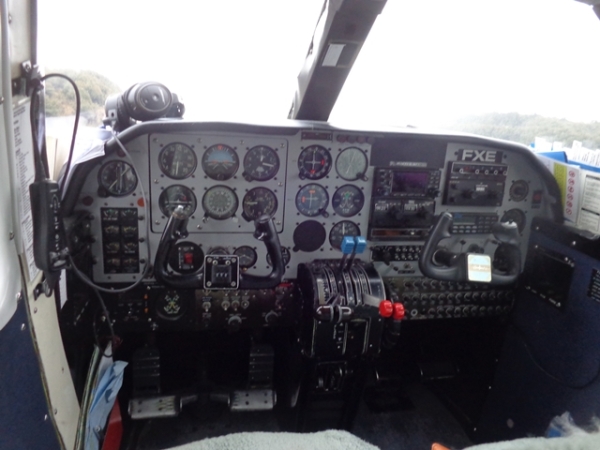


















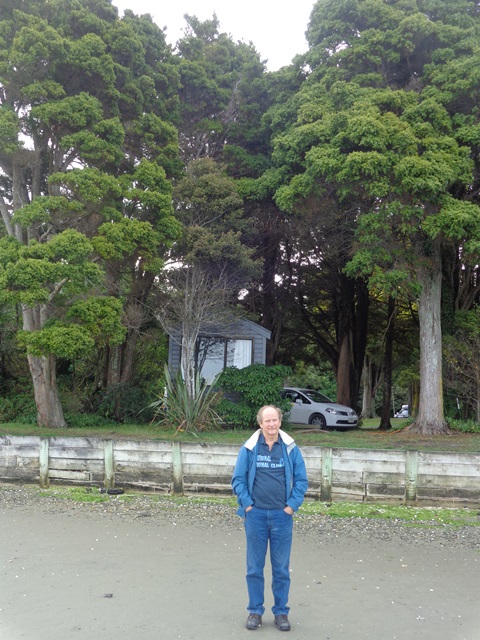
















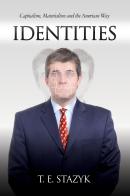
Wow! What a great place to go, full of interesting sights and experiences – thanks for that story,
Thank you for reading–glad you enjoyed it.
You offer the most stellar travelogues! I’m especially charmed by the bug preserves. And sea lions. Who doesn’t love a sea lion?
Thanks! Yes–sea lions definitely have it made.
Dear Tom,
Thanks for taking the time to narrate and photographically illustrate your trip to the south. I especially enjoyed your picture of the birds, the flora, and the fauna.
These photographic blogs take time to write and upload. I thoroughly enjoyed vicariously enjoying your trip.
Thanks Cheri! I appreciate your feedback.
What a fab holiday! I like Gordon and his antennae, and the Southern Swaggie. I notice the latter is looking quite different in the physique department 🙂
Yes we noticed that the walk is doing the Swagman good, too!
What a wonderful way to recharge the “batteries”, glad you are both home safe and rejuvenated
Thanks!
Thank you for a great adventure
You’re welcome–you should come on down and see the country first hand!
Very beautiful!
Glad you enjoyed!
Looks nice and interesting. You survived 🙂
Yes! You definitely need to come back and see the country again.
You were so lucky to see the kiwi on Ulva island. We did our best looking on both Ulva and Stewart and never did spot a one – though we did see little blue penguins – and that was a thrill.
Yes we were very lucky. It was such a surprise it took a while to realise what it was. Some guests at the place we stayed went out at 2am for two nights running to see some and had no luck.
Wow…what a great trip. The Wife and I did the South Island on out NZ trip in 2006. Took the ferry over from Wellington, and then did a loop down the west coast to Milford Sound, then back up the east coast to Christchurch then Auckland and Back to LAX. Didn’t get down to the tip like you did, maybe next time.
You have to plan another trip to fill in the gaps!
Tom, years ago I made up my mind that Stuart Island was on my visit list and that decision was made on the acquisition of one plant. I didn’t ask questions, but a N.Z. friend presented me with a Stuart Island Palm. It was such an amazing plant -it had “babies” and it appears that the male is totally different to the female. I still have to make that trip, but on sight of the size of the plane, I am rather daunted. again huge thanks for a great travelogue, Gail.
Amazing holiday! This is life! 🙂
WOW, WOW, WOW!
Did I tell you dear Thomas that I wanted to migrate to New Zealand after someone close to me (a Roman of Venetian origin) was planning to sell his beautiful house in down-town Rome and become a farmer of sheep over there?
I might have told you, since I am repeating myself more and more often.
Incidentally, I am writing a novel on Ancient Britannia & on today’s Rome: several, well, infinite universes, as Giordano Bruno had imagined – the one burned by the Catholic Church in the late Counter Reformation Renaissance – but as also modern physicists imagine now.
__________
I am here though for another reason. There is a debate going on over at my blog about the future of Europe. It is a series:
“Where is Europe going? Wide ranging dialogues at the Man of Roma’s cafe. 1”
“Where is Europe going? Piero Boitani’s letter to David Cameron (debate at the Man of Roma’s cafe). 2”
Professor Piero Boitani allowed me to publish his letter to the British PM David Cameron he just sent to the London’s daily The Independent.
It is creating some strife, because Boitani’s voice is loud and clear and is a many-generations Roman like me only immensely more successful (he is Fellow of the British Academy and Honorary Member of the Dante Society of America (together with Umberto Eco, among a list of successes that is mind-boggling.
Andreas, Richard, Sledpress, Cheri, Andy, Christopher et. are ALL there, debating debating.
In short – I am never short – WE NEED YOU, Thomas. We really do.
Ciao,
Giovanni
Thanks! I paid you a visit. Best of luck with the book and when your finished, treat yourself to a vacation down under!
I would LUV it, Thomas, God knows it how much. Down under. YES !!! 🙂
PS
Thanx for your excellent comment btw. Giovanni
We need you and also ALL the people that want to participate, it goes without saying folks 🙂
Each of your photographs presents a challenge to the imagination. Fascinating! But I fear that I now have indigestion of the imagination. 🙂 Thanks for this interesting travelogue!